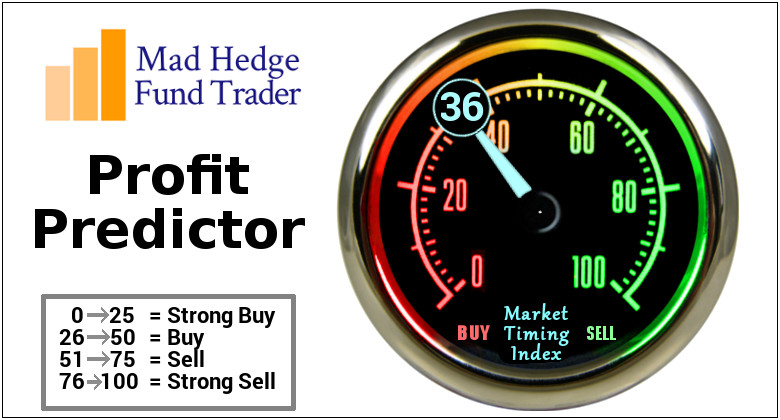Global Market Comments
June 28, 2018
Fiat Lux
Featured Trade:
(FRIDAY, AUGUST 3, 2018, AMSTERDAM, THE NETHERLANDS GLOBAL STRATEGY DINNER),
(TRAPPED IN PURGATORY),
(INDU), (SPY), (NASDAQ), (IWM), (TLT)

Global Market Comments
June 28, 2018
Fiat Lux
Featured Trade:
(FRIDAY, AUGUST 3, 2018, AMSTERDAM, THE NETHERLANDS GLOBAL STRATEGY DINNER),
(TRAPPED IN PURGATORY),
(INDU), (SPY), (NASDAQ), (IWM), (TLT)

I can't believe my eyes.
Here we are at the midpoint of 2018 and the main markets are virtually unchanged. The Dow Average is down 1.5%, the S&P 500 is up +1%, NASDAQ has gained 8.79%, and the Russell 2000 has tacked on 7.18%.
Despite all the promises that happy days are here again, here we are dead in the water. Since the passage of one of the most simulative tax bills in December, we have gone absolutely nowhere.
We are essentially stuck in stock market purgatory.
Of course, you can blame the trade wars, the onset of which marked the top of the bull market on January 24 at 26,252.
The president got one thing right. Trade wars are easy to win, but for dictatorships not for democracies.
If you complain about trade policies in China you are told to shut up or face getting sent to a re-education camp. Worst case you might disappear in the night as has happened to a number of Chinese billionaires lately.
In America any restraint of trade anywhere invites 10,000 highly paid lobbyists desperate to reverse the action. Offer any resistance and the reprobates are thrown out of office, as may happen here in four months.
The Chinese have one weapon against which we have no defense. They can go hungry. They'll just tell their people to toughen up for the greater good of the nation. When I first arrived in the Middle Kingdom 45 years ago they were still recovering from the aftereffects of a famine that killed 50 million (there are NO substitutes for food). Try doing that in the U.S.
The Chinese have another secret weapon at their disposal. They paid $3.63 a week for a subscription to the New York Times (including Sundays). Because of this they know that the president is going into the midterm elections with the lowest approval ratings in history.
And they are doing this running on a policy of sending children to concentration camps, which they don't even do in China anymore. This will cost the party votes in every state except in Oklahoma.
So the Chinese are content to hang tough, meet every tit with a tat, match every escalation, and wait out the current administration. The only question for them is whether the president will be gone in 2 1/2 years or in six months, so it pays to stall.
This is a country where history is measured in millennia. When I asked premier Zhou Enlai in the 1970s what the outcome of the 1792 French Revolution was, he responded "It's too early to say."
None of this is good for stock prices.
So I will continue with my now five-month-old prediction that markets will remain trapped in narrow ranges until before the midterms, and then rally strongly. It will do this not because of who wins, but because of the mere fact that it is over.
If you are a trader, unless you can buy stocks on those horrific capitulation panic days and sell on the most euphoric peaks, it's better just to stay away. I can do that, but I bet most of you can't. But then I've been practicing for 50 years. This is why I dumped the last of my positions yesterday morning at the highs of the day, shooting out three Trade Alerts in rapid succession.
By the way, these are excellent reasons to avoid the bond market as well. While the fundamentals tell us that interest rates should continue to rise for years, the charts tell us a different story.
With 10-year U.S. Treasury bond yields (TLT) hitting a five-month low today, it is hinting that a recession isn't a 2019 event, it in fact has already started. Bulls better fall down on their knees and pray to their chosen idol that this is nothing more than an extended short covering rally.
It all sounds like a great time to take a long cruise to me.
China in 1973
Suddenly, the consolidation turned into a correction and maybe even a bear market.
A crucial part of trading a crash is knowing what to do at the bottom. Don?t worry. You?ll receive a flurry of text alerts from me right when that happens.
Many individual investors simply run to the bathroom and lock the door, hoping nobody knocks on the door for a couple of days.
Worse, they dump every stock they have. That?s what makes market bottoms.
Trades that once seemed impossible can now get done, provided you use limit orders.
Let me get this right. Stocks are crashing because:
1) The Federal Reserve isn?t going to raise interest rates anymore.
2) The price of oil has dropped 84% in five years.
3) Commodities have reached multi-decade lows.
4) The US dollar has suddenly stabilized.
5) Investors are yanking money from abroad and pouring it into the US on a flight to safety trade because it is the only place they can obtain a positive return, especially in stocks.
May I point out the screamingly obvious right here?
These are all reasons for 90% of US companies that borrow money and consume energy and commodities to increase earnings and to boost their share prices.
Only the 10% that derive revenues from ripping oil and commodities out of the ground should get hurt here.
Of course the market doesn?t know that. It is anything but rational when we hit big triple digit declines. There was only one direction on, and that was OUT.
And that is where you make your money
Margin clerks rule supreme, squeezing every bit of leverage out of their clients they can find.
The Dow and (SPY) are already posting large negative numbers for 2016.
Of course, I saw all of this coming a mile off.
I have been banging drums, pulling fire alarms, shooting off flare guns, and otherwise warning readers that the technical situation for the market was terrible ever since I went 100% into cash in December.
When the breakdown appeared imminent, I shot out Trade Alerts to sell short the S&P 500 (SPY) in size as fast as I could write them. And I started buying outright (SPY) puts for the first time in ages.
As a result of these sudden tactical moves, my model-trading portfolio has been keeping its head above water all month, up 2%. The Dow Average is off by a nausea inducing -10.7% at today?s low.
Yes, yes! All the hard work and research is paying off!
Ignore my musings at your peril!
What is even more stunning is that these declines are occurring in the face of US macro economic numbers that are going from strength to strength. The blockbuster December nonfarm payroll report of 292,000 is the real writing on the wall.
Housing, which accounts for about one third of the US economy, has been on fire. I?m sorry, but if you can?t find a parking space at Target, there is no recession.
Another crucial leg of the US economy, auto manufacturing, has been in overdrive. Auto sales are at a record 18 million annual rate, and some summer production shut downs have been cancelled.
That is, everywhere except Volkswagen.
With two of the most important legs firing on all cylinders, it?s clearly not about the economy, stupid!
There certainly hasn?t been a geopolitical event to justify moves of this magnitude.
As far as I can tell, Hitler has not invaded Poland, nor have the Japanese attacked Pearl Harbor.
Sure, there is whining about China, which has the Shanghai Index approaching the 2,900 level once again, down 40% from the top.?
Which leads me to believe that all of this is nothing more than a temporary hiccup. A BIG Hofbrauhouse kind of hiccup, but a hiccup nonetheless.
In a zero interest rate world, stocks only have to fall back from a price earnings multiple of 18 to 15 to flush out a ton of buying, and they will have done just that when the (SPY) hits $174.
THAT IS MY LINE IN THE SAND.
If nothing else, corporate buybacks should reaccelerate here, which could reach $1 trillion in 2016. Some 75% companies exit their quiet period by February 5 and can resume buying.
That could signal an interim market bottom.
The great thing about this selloff is that the best quality companies have fallen the most. This has been a function of the heavy sovereign wealth fund selling the bridge oil deficits.
After all, when share prices are in free fall, you have to sell what you can, not what you want to. It is only human to realize profits rather than incur losses, so quality has been trashed.
I am therefore going to give you a list of ten of my favorite stocks to buy at the bottom, highlighting the sectors that will lead us into a yearend rally.
The themes here are home builders, consumer discretionary, autos, solar, old technology, and international. I?m sorry, but the entire interest sensitive sector is on hold for the rest of the year, thanks to likely Fed inaction.
Watch out, because when I sense that the market has burned itself out on the downside, the Trade Alerts are going to be coming hot and heavy.
You have been forewarned!
Read ?em and weep with joy!
10 Stocks to Buy at the Bottom
Lennar Homes (LEN)
Home Depot (HD)
Microsoft (MSFT)
General Electric (GE)
Tesla (TSLA)
Apple (AAPL)
First Solar (FSLR)
Palo Alto Networks (PANW)
Wisdom Tree Japan Hedged Equity (DXJ)
Wisdom Tree Europe Hedged Equity (HEDJ)
 Finally, All the Hard Work is Paying Off
Finally, All the Hard Work is Paying OffWhen the US Department of Labor announced its blockbuster May nonfarm payroll showing a 280,000 gain, stocks behaved like the world had just ended.
The 32,000 in March and April upward revisions didn?t help either.
You would think data showing that the economy is improving much faster than many realized would be positive for ?RISK ON? equity investments.
It wasn?t.
Now, the laser focus is on the bond market, which is collapsing globally. The complete disappearance of liquidity is exacerbating the moves.
Bond traders are now hyper sensitive to any news of a stronger American economy, which will soon lead to higher interest rate rises by Janet Yellen?s Federal Reserve.
A world is ending, but not the one you think. The zero interest rate regime on which we have all become heavily addicted over the last eight years is about to go into the history books.
Welcome to the looking glass world of investment these days. Good new is bad news and bad news good.
Players are in a manic depressive mood, expecting the economy to plunge into recession one month, and then discounting a robust recovery the next.
Then there?s Greece, which threatens to default on its debt on alternate days, and then offers to pay on the others. This has prompted the Euro (FXE) to undergo more gyrations than a circus contortionist.
Not a friendly environment for a trader. Sturm und drang with no net movement in the indexes doesn?t pave the road to trading riches. Even staying long volatility (VIX) is not working, unless you have the fastest finger in Chicago.
This is why I am keeping the Mad Hedge Fund Trader model trading portfolio to an absolute minimum bare bones of positions, a single 10% weighting in the S&P 500 that I snapped up at the Friday lows. And even that one has me edgy.
After polling many of my most loyal, long-term readers, I learned that they would rather see a small number of great trades than a large number of positions that include a few losers.
So, cherry picking it is, at least, for now.
To say that the nonfarm was fantastic is something of an under statement.
Private nonfarm jobs jumped by a dynamic 262,000. High paying professional and business services employment increased by a runaway 63,000. Leisure and hospitality ramped up to 57,000. Health care picked up 47,000.
The big loser was mining (coal, gold, silver), which shed 17,000 jobs. Headline unemployment held steady at 5.5%, while average hourly earnings rose by 0.3%.
It was almost a perfect report.
It certainly reinforces my own forecast of a hot 3% GDP growth rate for the final three quarters of 2015. The question bedeviling traders and investors alike now is, ?How much of this growth is already discounted in today?s prices??
You almost wonder if stocks are tired of going up, which have been appreciating for more than six years. Stock buyers need a new story.
With a discount Euro beckoning, it sounds like this summer will be the best ever to take a long vacation.
 Looks Like This is a Down Day
Looks Like This is a Down DayI think I have figured out the course of the global financial markets over the next few months.
We are currently transitioning from an economic data flow from Q1 that was very weak, to the second quarter, which will almost certainly deliver us a robust set of numbers. This is on the heels of a white hot Q1, 2014.
Hot, cold, hot; this is a trader?s dream come true, as it gives us the volatility we need to make a fortune, as we skillfully weave in and out of these gyrations.
That is, if you read the Diary of a Mad Hedge Fund Trader.
This is not a new thing. A weak Q1 has been a recurring event over the last 30 years. The anomaly has been so reliable that not a few traders have been able to earn a living from it. :) Heaven help us if the government ever tries to fix it.
To further complicate matters, some markets see this, while others have yet to open their eyes.
The stock market (SPY), (QQQ), (IWM) agree with my view, probing new all time highs, while companies announce diabolical Q1 earnings (Twitter (TWTR)? Yikes!). So do commodities, like oil (USO) and copper (FCX), whose recent strength suggests we are on the doorstep of a great economic Golden Age.
However, the foreign exchange market (FXE), (FXY) doesn?t see it this way. They can only comprehend the last data point that just crossed the tape.
If it is weak, they assume the Federal Reserve won?t even think about raising interest rates until well into 2016. If it is healthy, they bet the Fed will jack up rates tomorrow.
You might assume this is ridiculous, and you?d be right. However, forex traders live in a world where interest rate differentials are the principal, and to many the only driver of foreign exchange rates.
One market is right, and one is wrong. Did I mention that this is also a license for we nimble traders to print money?
Of course, you can play both side of the fence, as I do. That?s how I was able to coin it with a long position in the euro (a weak economy trade) the same day my long US equity portfolio (a strong economy trade) was going through the roof.
Let me give you another iteration of these scenarios. Inside the dollar correction we are seeing a pronounced sector rotation among US stocks.
Traders are moving out of small caps (IWM) that sheltered then from a strong dollar into large caps (SPY). They are also taking profits in biotech and rolling it into financials (GS), cyber security (PANW) and solar (TAN).
Goldman Sachs (GS) gave us more rocket fuel for the bull case for of American stocks this morning. The sage investment bank, in which my Trade Alert Service currently maintains a profitable long position, says that corporations will return a mind blowing $1 trillion to investors in 2015.
Share buy back from companies should rise by 18%, while dividends should pop by 7%. It is all a continuation of a six-year trend.
Apple (AAPL) certainly kicked off this quarter?s cavalcade of higher payouts on Monday, when it added $50 billion to its own stock repurchase program and jacked up its dividend by 11%.
Markets could get even more interesting after next week, when some 80% of S&P 500 companies will have existed the ?black out? period when they are not allowed by SEC regulations to buy their own stock.
I say ?tally ho,? and ?tally ho? again.
 It?s Tally Ho for the Stock Market
It?s Tally Ho for the Stock MarketI?ll let you in on my top secret investment strategy that has brought me blockbuster results over the past six years.
Listen to the Wharton Business School?s professor, Jeremy Siegel.
The good doctor has been unremittingly bullish year in and year out, nearly pegging the stock index performance annually.
So, when he says that the Dow Average is going to rise to 20,000 by the end of 2015, that?s good enough for me. In fact Siegel thinks that at current price earnings multiple of 17 times, the bull market has years to run.
It would not be until we hit nosebleed levels of 25X or 30X earnings that he would get worried. And the current ultra low level of interest might even make these high multiple numbers justifiable.
So for the foreseeable future, we are going to see long periods of tedious range trading, followed by frenetic rounds of buying, once the market decides that it is time to discount the next rise in corporate earnings.
We happen to be in one of those range-trading periods right now, which my partner, Mad Day Trader Jim Parker, thinks could last all the way until September.
Actually, it is a little more complicated than that.
There is good reason for the stock market to go to sleep over the next two weeks.
Do you hear that great sucking sound? That is the noise of 170 million tax payers writing checks to the US Internal Revenue Service.
Foreign readers may not realize this, but tax payments are due in the United States on April 15 every year. I would ask for your sympathy, but I know all of you pay far more in taxes than we do. I know, because I used to pay them myself when I lived abroad for 23 years.
Of the $6 trillion in revenues from all sources due to Uncle Sam in 2015, 37%, or $2.2 trillion will come in the form of individual income taxes. That is a big hit for the financial system. That means for the next two weeks there won?t be any extra money lying around to put into the stock market.
There is another reason why the stock indexes are stagnating here. The Q1, 2015 corporate earnings reporting season kicks off when Alcoa (AA) reports on April 8, or in six trading days. Until then, we are in the quiet period, and companies are not allowed the buy back their own stock.
This is a big deal, since companies buying back their own shares have provided major support for the stock market for many years. Possibly a quarter of all the net cash flow pouring into stocks since 2009 has come from this source.
Take it away, even for a short period, and the most bullish thing the market can do is move sideways, which is exactly what it has been doing for the past two months.
What happens when the tax payment deadline passes and the quiet period ends? Stocks take off like a bat out of hell. That will take us to the spring interim peak.
This is why I strapped on three new ?RISK ON? positions last Friday, longs in the Russell 2000 (IWM) and Goldman Sachs (GS) and a short in the euro (FXE).
Yes, that is the shocking truth that Fed chairman Janet Yellen told us today with the release of the central bank?s minutes.
Of course, she didn?t exactly say that she would raise interest rates for the first time in a decade in so many words. To discern that, you had to be fluent in Janetspeak.
Very few people have the slightest idea what comprises Janetspeak. It just so happens that I am quite knowledgeable in this arcane argot. In fact I can even negotiate a menu written entirely in Janetspeak and receive a meal reasonably close to what I thought I ordered.
I learned this esoteric language through private tutoring from none other than Janet Yellen herself. These I obtained while having lunch with her at the San Francisco Fed every quarter for five years.
It was a courtesy Janet extended not just to me, but to all San Francisco Bay area financial journalists. But fewer than a half dozen of us ever showed up, as monetary policy is so inherently boring, and government supplied food is never all that great. Ask any Marine.
So let me parse the words for you, the uninitiated. The Fed removed the crucial word ?patient? from its discussion. In the same breath, it says it is unlikely that rates will rise at the April meeting.
She said that any future rate rise would be conditional on continued improvement in the labor market. As the US economy is now approaching full employment, there seems to be little room for improvement there.
Now comes the vital part. Janet also said that an increase in interest rates would also be conditional on inflation returning to the Fed?s 2% inflation target!
Here?s a news flash for sports fans. Inflation is not rising. It is falling. Look no further than the price of oil, which kissed the $42 a barrel handle only this morning.
Inflation is at negative numbers in Europe and in Japan. Even the Fed?s own inflation calculation has price rises limited to 1% in 2015. Their best-case scenario does not have inflation rising to 2% until 2017 at the earliest.
Furthermore, things on the deflation front are going to get worse before they get better. Some one third of all the debt is Europe now carries negative interest rates.
Tell me about inflation when oil hits $20, which it could do in coming months, and will have a massive deflationary impact on the entire US economy, especially in Texas.
That?s the key to understanding Janet. When she says that she won?t raise rates until she sees the whites of inflations eyes, she means it.
I love the way that Janet came to this indirect decision, worthy of King Salomon himself. By taking ?patient? out of the Fed statement, she is throwing a bone to the growing number of hawks among the Fed governors.
At the same time she shatters any impact this action might have. The end result is a monetary policy that is even more dovish than if ?patient? has stayed in.
That is so Janet. No wonder she did so well as a professor at UC Berkeley, the most political institution in the world. I feel like I?m back at college.
You all might think I?m smoking something up here in the High Sierra, or that maybe a rock fell down and hit me on the head. But look at the market action. I?ll go to the video tapes.
Every asset class delivered a kneejerk reaction as if the Fed had just CUT interest rates. Stocks (IWM), bonds (TLT), the euro (FXE), the yen (FXY), OIL (USO), and gold (GLD) all rocketed. The dollar and yields dove.
This is the exact opposite of what every market participant expected, which is why the moves were so big. It is also why I went into this with a 100% cash position in my model trading portfolio.
We lost the word ?patient? we got the ?patient? result.
I had a batch of Trade Alerts cued up and ready to go expecting a dovish outcome. But it was delivered in such a left-handed fashion that I held back on the news flash. It was only when I heard the words from Janet herself that I understood exactly what was happening.
Out went the Trade Alert to buy the Russell 2000 (IWM)! Out went the Trade Alert to pick up some Wisdom Tree Japan Hedged Equity ETF (DXJ)!
Why the (IWM)? Because small caps are the American stocks least affected by a weak Euro.
Why the (DXJ)? Because the Fed action is an overwhelmingly ?RISK ON?, pro stock action. Unlike the rest if the world, the Japanese stock market has to double before it reaches new all time highs. It is just getting started.
Won?t today?s strong yen hurt the (DXJ)? Only momentarily. The Nikkei has yet to discount the breakdown from Y100 to Y120 that has already occurred, let alone the depreciation from Y120 to Y125 that is about to unfold.
Banzai!
We have several options positions that expire on Friday, and I just want to explain to the newbies how to best maximize their profits.
These include:
The Currency Shares Japanese Yen Trust (FXY) February $84-$87 vertical bear put spread
The Gilead Sciences (GILD) February $87.50-$92.50 vertical bull call spread
The S&P 500 (SPY) February $199-$202 vertical bull call spread
My bets that (GILD) and the (SPY) would rise, and that the (FXY) would fall during January and February proved dead on accurate. We got a further kicker with the two stock positions in that we captured a dramatic plunge in volatility (VIX).
Provided that some 9/11 type event doesn?t occur today, all three positions should expire at their maximum profit point. In that case, your profits on these positions will amount to 13% for the (FXY), 19% for (GILD) and 20% for the (SPY).
This will bring us a fabulous 5.58% profit so far for February, and a market beating 6.11% for year-to-date 2015.
Many of you have already emailed me asking what to do with these winning positions. The answer is very simple. You take your left hand, grab your right wrist, pull it behind your neck and pat yourself on the back for a job well done. You don?t have to do anything.
Your broker (are they still called that?) will automatically use your long put position to cover the short put position, cancelling out the total holding. Ditto for the call spreads. The profit will be credited to your account on Monday morning, and he margin freed up.
If you don?t see the cash show up in you account on Monday, get on the blower immediately. Although the expiration process is now supposed to be fully automated, occasionally mistakes do occur. Better to sort out any confusion before losses ensue.
I don?t usually run positions into expiration like this, preferring to take profits two weeks ahead of time, as the risk reward is no longer that favorable.
But we have a ton of cash right now, and I don?t see any other great entry points for the moment. Better to keep the cash working and duck the double commissions. This time being a pig paid off handsomely.
If you want to wimp out and close the position before the expiration, it may be expensive to do so. Keep in mind that the liquidity in the options market disappears, and the spreads substantially widen, when a security has only hours, or minutes until expiration. This is known in the trade as the ?expiration risk.?
One way or the other, I?m sure you?ll do OK, as long as I am looking over your shoulder, as I will be.
This expiration will leave me with a very rare 100% cash position. I am going to hang back and wait for good entry points before jumping back in. It?s all about getting that ?buy low, sell high? thing going again.
There are already interesting trades setting up in bonds (TLT), the (SPY), the Russell 2000 (IWM), NASDAQ (QQQ), solar stocks (SCTY), oil (USO), and gold (GLD).
The currencies seem to have gone dead for the time being, so I?ll stay away.
Well done, and on to the next trade.
 Pat Yourself on the Back
Pat Yourself on the BackEconomists were blown away by the January nonfarm payroll numbers, announced on Friday.
Some 257,000 jobs were added the previous month, holding the headline unemployment figure at 5.7%. Far more important were the revisions for earlier months, which saw December increased to a robust 329,000 and November bumped up to a breathtaking 423,000.
These numbers are almost back to ?normal.? Are ?normal? interest rates to follow?
All told, the January report, the revisions and the additions to the work force means that 703,000 jobs were added to the economy, taking the year on year increase to a positively boom time 3 million. The last quarter has seen the fastest jobs growth rate since 1997. Yikes!
A major part of the new jobs were in retail, proof that our windfall tax cut in the form of falling gasoline prices is finally kicking in.
Needless to say, this is all a bit of a game changer.
It totally vindicates the high-end forecasts for the US economy of 3% plus I made in my New Year forecasts (click here for my ?2015 Annual Asset Class Review?).
The data confirms my thesis that investors are substantially underestimating the strength of the US economy. Furthermore, they have yet to understand the enormously positive impact of cheap energy prices.
It also means that the bull market in stocks is alive and well. It is only resting.
To understand why, let me highlight the major points brought to the fore by the Bureau of Labor Statistics report.
1) The US Economy Has Entered a Self Sustaining Recovery
The trend line for many economic data points are now moving so convincingly upward that they can no longer be treated as statistical anomalies. Nor can they be ascribed to temporary artificial overstimulation by the Federal Reserve in the form of quantitative easing.
Count on Treasury Secretary, Jack Lew, to announce ?mission accomplished? when he address congress later on this week (click here for my one-on-one with Jack, ?Riding With the Treasury Secretary?).
My bet is that this is not our last blockbuster revision. Next to come will be the Q4 GDP, from the just reported flaccid 2.6% annual rate back towards the red hot 5% seen in Q3.
2) The Date for the Next Fed Rate Hike has Been Moved Up
The bond market certainly believed this last week, giving up 9 full points in a couple of days, taking yields from 2.62% to 2.92% in a heartbeat.
I still think this is a 2016 story. The pernicious effects of deflation are still advancing, not retreating, and are not exactly an argument for raising interest rates. But there is no doubt that the desire among the Fed governors to return rates to normal levels is growing, especially if the impact on the economy will be minimal. So call the next rate rise an early, rather than a later, 2016 eventuality.
3) The Strong Dollar is Becoming a Factor With Earnings
The Euro (FXE) has depreciated 31% against the dollar from its 2008 peak, and the yen (FXY) 38% from its 2011 apex. Yet the impact on corporate earnings so far has been marginal at best.
Where will it really start to hurt?
When these currencies approach my final targets of 87 cents and 150, or down another 22% and 18%. It is safe to say that a strong dollar will command an increasing amount of our attention going forward.
This is the argument for investing in small cap US stocks (IWM), where the currency exposure is minimal. Hedge European (HEDJ) and Japanese (DXJ) stocks start to look pretty good too.
4) Wages May Finally Be Rising
The biggest structural impediment facing the US economy has been wage inequality, where virtually all of the benefits of growth accrue to the risk investors of the 1% at the expense of the working class. Hyper accelerating technology and dreadfully imbalanced tax policies are to blame.
January brought us an increase in wages that was miniscule, incremental and modest at best, but it was an increase nonetheless. Average hourly earnings fell by 5 cents in December and then rose by 12 cents the following month.
If this continues, consumer spending will see a big revival, giving us yet another leg to a rising stock market, and creating a win-win situation for all.
One can only hope.
5) More Americans Are Looking for Work
The really amazing thing about the January numbers that they occurred in the face of a large increase in the work force. The participation rate, which has been plummeting for a decade, rose smartly. Long-term U-6 unemployment stayed high, but is down a quarter from peak levels.
To me, this is all a warm up for my ?Golden Age? in the 2020?s. The best is yet to come.
 Suddenly, the Line is Getting Shorter
Suddenly, the Line is Getting ShorterAt yesterday morning?s opening bell, we were greeted with the unmistakable evidence the stock market is technically breaking down.
The Dow Average has broken its three-year upward sloping trend line. Market leading sectors, like Consumer Discretionary and Financials have all put in eminently convincing ?Head and Shoulders? tops (click here). More distressingly, the head and shoulders for lead sector Technology has already broken down. Check out all the charts below.
I quickly ran my expiration P&L this morning. I figured out that if I sold all my longs for small profits (SPY), (IWM), and kept all my short positions (FXY), (T), (AA), I would be up 4.43% year to date by mid February, which in this environment is nothing less than heroic. The exception to the analysis is my sale of Linn Energy (LINE), which will be the subject of my next piece.
For more detail on why this is happening, read today?s letter, ?The Great American Rot is Ending? by clicking here).
 Time to Bail
Time to BailLegal Disclaimer
There is a very high degree of risk involved in trading. Past results are not indicative of future returns. MadHedgeFundTrader.com and all individuals affiliated with this site assume no responsibilities for your trading and investment results. The indicators, strategies, columns, articles and all other features are for educational purposes only and should not be construed as investment advice. Information for futures trading observations are obtained from sources believed to be reliable, but we do not warrant its completeness or accuracy, or warrant any results from the use of the information. Your use of the trading observations is entirely at your own risk and it is your sole responsibility to evaluate the accuracy, completeness and usefulness of the information. You must assess the risk of any trade with your broker and make your own independent decisions regarding any securities mentioned herein. Affiliates of MadHedgeFundTrader.com may have a position or effect transactions in the securities described herein (or options thereon) and/or otherwise employ trading strategies that may be consistent or inconsistent with the provided strategies.
